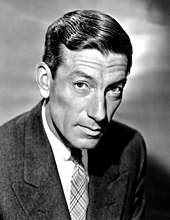The kit comes with a ton of press information and background material and is housed in a deluxe tri-fold press kit folder. There are James Bond 007 trivia questions; an interview with John Lowry, the restoration expert who restored these films; and a press release about the new "Art of Bond" book being released.
The James Bond series focuses on the titular character, a fictional British Secret Service agent created in 1953 by writer Ian Fleming, who featured him in twelve novels and two short-story collections. Since Fleming's death in 1964, eight other authors have written authorised Bond novels or novelisations: Kingsley Amis, Christopher Wood, John Gardner, Raymond Benson, Sebastian Faulks, Jeffery Deaver, William Boyd, and Anthony Horowitz. The latest novel is With a Mind to Kill by Anthony Horowitz, published in May 2022. Additionally Charlie Higson wrote a series on a young James Bond, and Kate Westbrook wrote three novels based on the diaries of a recurring series character, Moneypenny.
The character—also known by the code number 007 (pronounced "double-oh-seven")—has also been adapted for television, radio, comic strip, video games and film. The films are one of the longest continually running film series and have grossed over US$7.04 billion in total at the box office, making it the fifth-highest-grossing film series to date, which started in 1962 with Dr. No, starring Sean Connery as Bond. As of 2021, there have been twenty-five films in the Eon Productions series. The most recent Bond film, No Time to Die (2021), stars Daniel Craig in his fifth portrayal of Bond; he is the sixth actor to play Bond in the Eon series. There have also been two independent Bond film productions: Casino Royale (a 1967 spoof starring David Niven) and Never Say Never Again (a 1983 remake of an earlier Eon-produced film, 1965's Thunderball, both starring Connery). In 2015, the series was estimated to be worth $19.9 billion in total (based on box-office grosses, DVD sales and merchandise tie-ins),[1] making James Bond one of the highest-grossing media franchises of all time. Casino Royale has also been adapted for television, as a one-hour show in 1954 as part of the CBS series Climax!.
The Bond films are renowned for a number of features, including their soundtracks, with the theme songs having received Academy Award nominations on several occasions, and three wins. Other important elements which run through most of the films include Bond's cars, his guns, and the gadgets with which he is supplied by Q Branch. The films are also noted for Bond's relationships with various women, who are popularly referred to as "Bond girls".
Publication history
Creation and inspiration
Ian Fleming created the fictional character of James Bond as the central figure for his works. Bond is an intelligence officer in the Secret Intelligence Service, commonly known as MI6. Bond is known by his code number, 007, and was a Royal Naval Reserve Commander. Fleming based his fictional creation on a number of individuals he came across during his time in the Naval Intelligence Division and 30 Assault Unit during the Second World War, admitting that Bond "was a compound of all the secret agents and commando types I met during the war".[2] Among those types were his brother, Peter, who had been involved in behind-the-lines operations in Norway and Greece during the war.[3] Aside from Fleming's brother, a number of others also provided some aspects of Bond's make up, including Conrad O'Brien-ffrench, Patrick Dalzel-Job, Bill "Biffy" Dunderdale and Duško Popov.[2][4]
The name James Bond came from that of the American ornithologist James Bond, a Caribbean bird expert and author of the definitive field guide Birds of the West Indies. Fleming, a keen birdwatcher himself, had a copy of Bond's guide and he later explained to the ornithologist's wife that "It struck me that this brief, unromantic, Anglo-Saxon and yet very masculine name was just what I needed, and so a second James Bond was born".[5] He further explained that:
When I wrote the first one in 1953, I wanted Bond to be an extremely dull, uninteresting man to whom things happened; I wanted him to be a blunt instrument ... when I was casting around for a name for my protagonist I thought by God, [James Bond] is the dullest name I ever heard.
— Ian Fleming, The New Yorker, 21 April 1962[6]
On another occasion, Fleming said: "I wanted the simplest, dullest, plainest-sounding name I could find, 'James Bond' was much better than something more interesting, like 'Peregrine Carruthers'. Exotic things would happen to and around him, but he would be a neutral figure—an anonymous, blunt instrument wielded by a government department."[7]

Fleming decided that Bond should resemble both American singer Hoagy Carmichael and himself[8] and in Casino Royale, Vesper Lynd remarks, "Bond reminds me rather of Hoagy Carmichael, but there is something cold and ruthless." Likewise, in Moonraker, Special Branch officer Gala Brand thinks that Bond is "certainly good-looking ... Rather like Hoagy Carmichael in a way. That black hair falling down over the right eyebrow. Much the same bones. But there was something a bit cruel in the mouth, and the eyes were cold."[8]
Fleming endowed Bond with many of his own traits, including sharing the same golf handicap, the taste for scrambled eggs, and using the same brand of toiletries.[9] Bond's tastes are also often taken from Fleming's own as was his behaviour,[10] with Bond's love of golf and gambling mirroring Fleming's own. Fleming used his experiences of his career in espionage and all other aspects of his life as inspiration when writing, including using names of school friends, acquaintances, relatives and lovers throughout his books.[2]
It was not until the penultimate novel, You Only Live Twice, that Fleming gave Bond a sense of family background. The book was the first to be written after the release of Dr. No in cinemas, and Sean Connery's depiction of Bond affected Fleming's interpretation of the character, henceforth giving Bond both a dry sense of humour and Scottish antecedents that were not present in the previous stories.[11] In a fictional obituary, purportedly published in The Times, Bond's parents were given as Andrew Bond, from the village of Glencoe, Scotland, and Monique Delacroix, from the canton of Vaud, Switzerland.[12] Fleming did not provide Bond's date of birth, but John Pearson's fictional biography of Bond, James Bond: The Authorized Biography of 007, gives Bond a birth date on 11 November 1920,[13] while a study by John Griswold puts the date at 11 November 1921.[14]
Ian Fleming novels

Whilst serving in the Naval Intelligence Division, Fleming had planned to become an author[16] and had told a friend, "I am going to write the spy story to end all spy stories."[2] On 17 February 1952, he began writing his first James Bond novel, Casino Royale, at his Goldeneye estate in Jamaica,[17] where he wrote all his Bond novels during the months of January and February each year.[18] He started the story shortly before his wedding to his pregnant girlfriend, Ann Charteris, in order to distract himself from his forthcoming nuptials.[19]
After completing the manuscript for Casino Royale, Fleming showed it to his friend (and later editor) William Plomer to read. Plomer liked it and submitted it to the publishers, Jonathan Cape, who did not like it as much. Cape finally published it in 1953 on the recommendation of Fleming's older brother Peter, an established travel writer.[18] Between 1953 and 1966, two years after his death, twelve novels and two short-story collections were published, with the last two books—The Man with the Golden Gun and Octopussy and The Living Daylights—published posthumously.[20] All the books were published in the UK through Jonathan Cape.
|
|
Post-Fleming novels
After Fleming's death, a continuation novel, Colonel Sun, was written by Kingsley Amis (as Robert Markham) and published in 1968.[35] Amis had already written a literary study of Fleming's Bond novels in his 1965 work The James Bond Dossier.[36] Although novelisations of two of the Eon Productions Bond films appeared in print, James Bond, The Spy Who Loved Me and James Bond and Moonraker, both written by screenwriter Christopher Wood,[37] the series of novels did not continue until the 1980s. In 1981, the thriller writer John Gardner picked up the series with Licence Renewed.[38] Gardner went on to write sixteen Bond books in total; two of the books he wrote were novelisations of Eon Productions films of the same name: Licence to Kill and GoldenEye. Gardner moved the Bond series into the 1980s, although he retained the ages of the characters as they were when Fleming had left them.[39] In 1996, Gardner retired from writing James Bond books due to ill health.[40]
|
|
In 1996, the American author Raymond Benson became the author of the Bond novels. Benson had previously been the author of The James Bond Bedside Companion, first published in 1984.[55] By the time he moved on to other, non-Bond related projects in 2002, Benson had written six Bond novels, three novelisations and three short stories.[56]
|
|
After a gap of six years, Sebastian Faulks was commissioned by Ian Fleming Publications to write a new Bond novel, which was released on 28 May 2008, the 100th anniversary of Fleming's birth.[66] The book—titled Devil May Care—was published in the UK by Penguin Books and by Doubleday in the US.[67] American writer Jeffery Deaver was then commissioned by Ian Fleming Publications to produce Carte Blanche, which was published on 26 May 2011.[68] The book turned Bond into a post-9/11 agent, independent of MI5 or MI6.[69] On 26 September 2013, Solo by William Boyd, set in 1969, was published.[70] In October 2014, it was announced that Anthony Horowitz was to write a Bond continuation novel.[71] Set in the 1950s two weeks after the events of Goldfinger, it contains material written, but previously unreleased, by Fleming. Trigger Mortis was released on 8 September 2015.[72][73][74] Horowitz's second Bond novel, Forever and a Day, tells the origin story of Bond as a 00 agent prior to the events of Casino Royale. The novel, also based on unpublished material from Fleming, was released on 31 May 2018.[75][76] Horowitz's third Bond novel, With a Mind to Kill, was published on 26 May 2022.[77] Charlie Higson's first adult Bond novel, On His Majesty's Secret Service, was published on 4 May 2023 to celebrate the Coronation of King Charles III and support the National Literacy Trust.[78]
|
|
Young Bond
The Young Bond series of novels was started by Charlie Higson[79] and, between 2005 and 2009, five novels and one short story were published.[80] The first Young Bond novel, SilverFin was also adapted and released as a graphic novel on 2 October 2008 by Puffin Books.[81] In October 2013 Ian Fleming Publications announced that Stephen Cole would continue the series, with the first edition scheduled to be released in Autumn 2014.[82]
|
The Moneypenny Diaries
The Moneypenny Diaries are a trilogy of novels chronicling the life of Miss Moneypenny, M's personal secretary. The novels are written by Samantha Weinberg under the pseudonym Kate Westbrook, who is depicted as the book's "editor".[90] The first instalment of the trilogy, subtitled Guardian Angel, was released on 10 October 2005 in the UK.[91] A second volume, subtitled Secret Servant was released on 2 November 2006 in the UK, published by John Murray.[92] A third volume, subtitled Final Fling was released on 1 May 2008.[93]